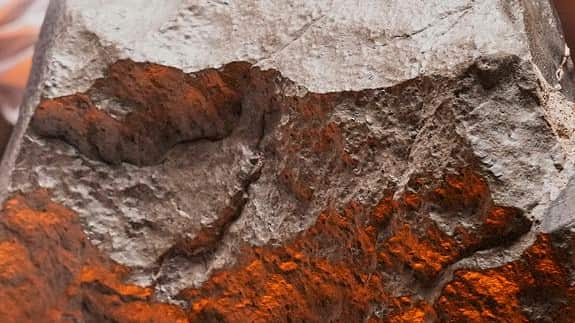A 25-kilogram rock will be auctioned this Wednesday at Sotheby’s in New York. It is the largest fragment of Mars ever found on Earth, known as NWA 16788, and its price could reach $4 million.
According to the auction house, it is believed that the meteorite was ejected from the surface of Mars by the impact of a huge asteroid before traveling 225 million kilometers to Earth, where it crashed in the African Sahara Desert.
PUBLICIDAD
A meteorite hunter found it in the remote region of Agadez, in Niger, in November 2023, as reported by Sotheby’s and picked up by the AP agency.
The Martian rock will be sold at a natural history auction that also includes a juvenile Ceratosaurus dinosaur skeleton over 2 meters tall and almost 3 meters long.
The Martian rock is a unique piece
The reddish-brown piece is approximately 70% larger than the second largest piece of Mars found on Earth and represents almost 7% of all Martian material currently on this planet, says Sotheby’s.
In total, it measures almost 375 millimeters long, 279 millimeters wide, and 152 millimeters high.
“This Martian meteorite is, by far, the largest fragment of Mars we have ever found,” says Cassandra Hatton, Vice President of Science and Natural History at Sotheby’s. “Therefore, it is more than twice the size we believed the largest Mars fragment to be.”
According to various agencies, this piece is an exceptional find, as there are only 400 Martian meteorites out of the more than 77,000 officially recognized meteorites found on Earth. Hatton points out that a small fragment of the piece has been extracted for auction to study it and confirm its authenticity.
The study determined that it is an olivine-microgabbroic shergottite, formed from the slow cooling of Martian magma. It has a coarse-grained texture composed mainly of pyroxene, maskelynite, and olivine. It also has a glassy surface, probably due to the high heat it experienced when passing through the Earth’s atmosphere, according to Hatton.
The auction house indicates that it is not known for certain when the meteorite impacted Earth, but evidence suggests that it probably happened in recent years.
